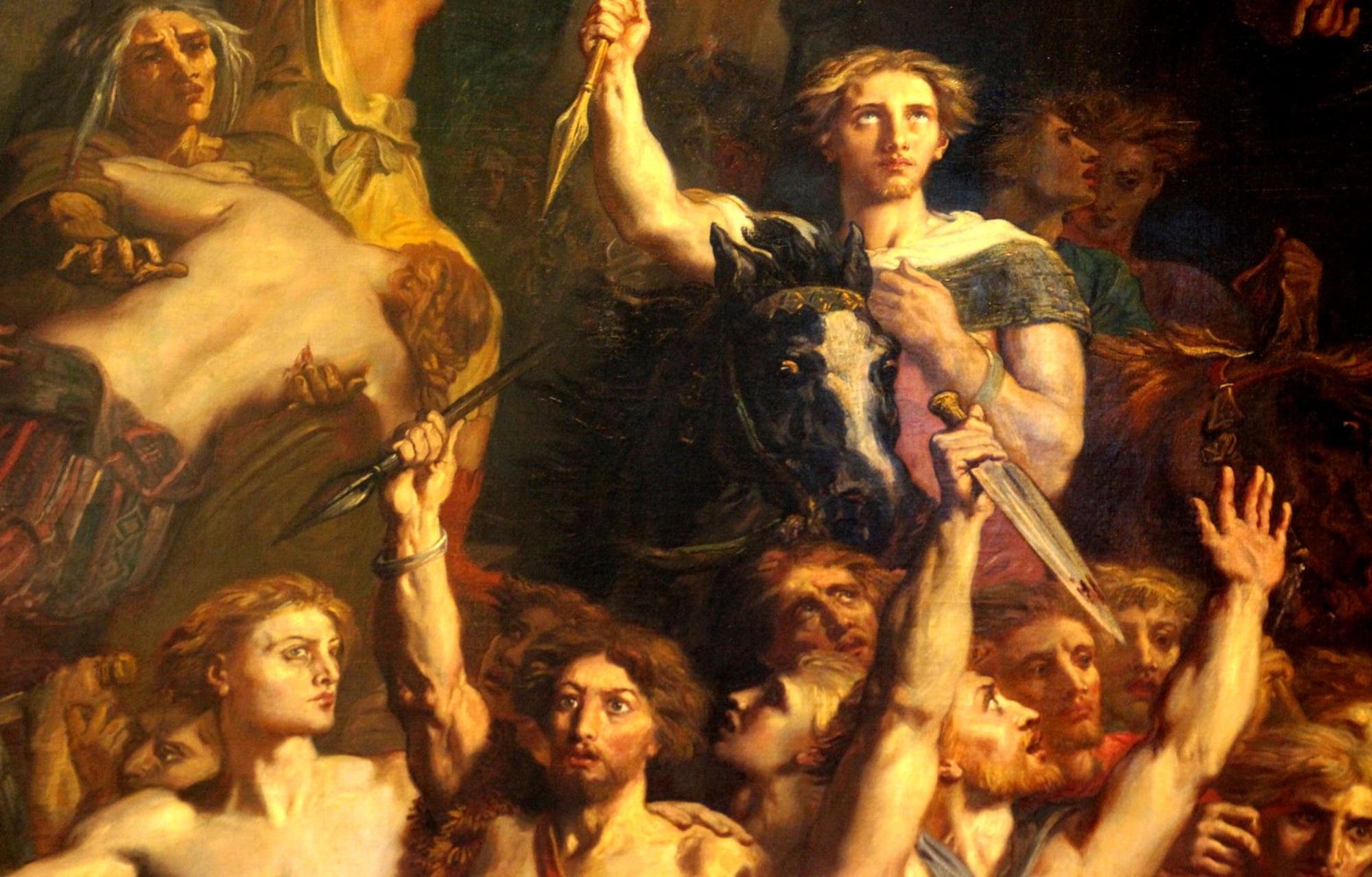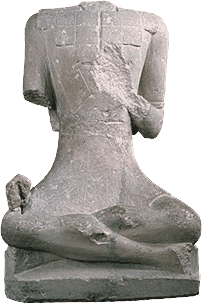- Home
- Society and power
- Heroes and society
Bust of Saint-Anastasia. Anthropomorphic representation of the head on a massif bust.
The emergence of heroes
In the societies of Antiquity, the phenomenon of heroizing an individual after his death was not solely a result of the dynamic structuration of the social body. It was more an expression of the need for new identities associated with a period of profound social mutation, and also a response to the needs for protection of a more delimited and perennial territory of production. The hero being more human in nature, it was closer to the living members of its community than were the local divinities, who remained more distant and unpredictable. This explains the strong presence of heroes in western Protohistoric populations starting at the end of the Bronze Age.
The representation of heroes
The first sculpted representations of the Bronze Age were dedicated to these honored individuals. This is logical since an anthropomorphic representation of gods would have no sense in the context of Celtic beliefs. The busts of Saint-Anastasia and Marduel (Gard region), probably from the 7th to 6th century BC, are characteristic of these first depictions.
At the end of the first Iron Age, the hieratic heroes, seated in a Buddha position and dressed in highly ornate clothing, were displayed in a context that symbolically expressed the power of the Afterworld. For example, at Roqueperteuse (Bouches-du-Rhône) the statues were accompanied by a naturalistic or fantastic bestiary that contributed to a cosmological and eschatological discourse. Central to this visual teaching was the notion of the survival of the superior spirit, which lived in the skulls of ancestors in the form of relics, and the most valued of which were reincarnated. These sanctuaries played a role similar to that of oracles, as is suggested by the practices described by Nicandre de Colophon around 150 BC (ap. Tertullien, De anima, 57)
Seated hero of Roquepertuse. This “Buddha-like” manner (except that here the feet are posed flat!) was attributed to warriors with high social status, either during or after life. This would become the model for representations of heroes, and later for the divinities of Gaul.
Diversity of cults during the second Iron Age
Archaeological evidence from the second Iron Age shows the existence of multiple heroic cults that varied according to the social classes concerned and the associated political influence. In contrast to the modest contemporary practice of incinerations at the settlements of Verduron or La Cloche (near Marseilles), the presence of an aristocratic class was clearly emphasized at Entremont.
The heroes of Entremont
The heroes of Entremont, represented by armed warriors and their trophies, were displayed near representations of the members of their aristocratic line, who were dunastai accompanied by their families. This powerful social class was expressed in a minutely realistic manner, including depictions of the details of their jewelry, torques, and leather slippers with laces. The individuals were no longer attached to pedestals, indicating the use of specific supports (massive pillars?) to present them in a high position. The relic heads of ancestors displayed near the real or mythic heroes were replaced with representations of living aristocratic families or their close ancestors. The appropriation of the power of the heroes by the political power was thus complete.
The earlier spiritual atmosphere of the sanctuaries was muted by less timeless and more realistic expressions. It was replaced by an image imprinted with a valorizing political connotation for the ruling families.
“Hero” of Entremont in the seated position, following a tradition that would be henceforth multi-secular, but whose realism and detail attest to a long history beginning with the figurations of Roqueperteuse.
Graphic reconstruction of a seated hero. The offensive arms accompanying this individual clearly indicate his warrior status. This is further confirmed by the human trophies displayed in front of him and around his knees, which express his bravery in combat.



